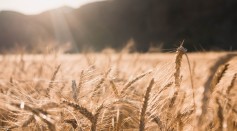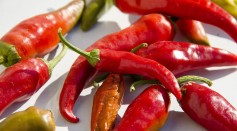crop

Plowing and Tilling Slopes Cause Thinning of Soils and Jeopardizes Crop Yields, Study Claims

New Mexico Chile Cultivated, Grown on ISS Harvested for the First Time; NASA Says It's the Longest Plant Experiment in Space
Creating an Excellent Blueberry Crop Requires Bees
Scientists Discover the Key to Increasing Crop Yields
Plant Scientists Discover Gene that Can Potentially Increase Crop Yields
Heat Will Drive Lower Crop Yields, Not Drought
Armyworm Caterpillar Invasion: Crop-Killing Bugs Reaches Kenya After Uganda
Armyworm Caterpillar Invasion: Crop-Killing Bugs Reaches Kenya After Uganda
DNA Evidence of Wheat Upsets Archeological History of the Crop in Early England
Most Popular

How Technology Is Changing the Real Estate Industry?

How a Plant-Based Diet Can Protect Against Breast Cancer: Insights from Nutrition Research

Study Reveals High Turnover in Scientific Research Careers: What This Means for Future Scientists

Why It's So Difficult to Lose Weight: The Biological Explanation Behind Obesity





